RBS 2010 Annual Report Download - page 133
Download and view the complete annual report
Please find page 133 of the 2010 RBS annual report below. You can navigate through the pages in the report by either clicking on the pages listed below, or by using the keyword search tool below to find specific information within the annual report.-
 1
1 -
 2
2 -
 3
3 -
 4
4 -
 5
5 -
 6
6 -
 7
7 -
 8
8 -
 9
9 -
 10
10 -
 11
11 -
 12
12 -
 13
13 -
 14
14 -
 15
15 -
 16
16 -
 17
17 -
 18
18 -
 19
19 -
 20
20 -
 21
21 -
 22
22 -
 23
23 -
 24
24 -
 25
25 -
 26
26 -
 27
27 -
 28
28 -
 29
29 -
 30
30 -
 31
31 -
 32
32 -
 33
33 -
 34
34 -
 35
35 -
 36
36 -
 37
37 -
 38
38 -
 39
39 -
 40
40 -
 41
41 -
 42
42 -
 43
43 -
 44
44 -
 45
45 -
 46
46 -
 47
47 -
 48
48 -
 49
49 -
 50
50 -
 51
51 -
 52
52 -
 53
53 -
 54
54 -
 55
55 -
 56
56 -
 57
57 -
 58
58 -
 59
59 -
 60
60 -
 61
61 -
 62
62 -
 63
63 -
 64
64 -
 65
65 -
 66
66 -
 67
67 -
 68
68 -
 69
69 -
 70
70 -
 71
71 -
 72
72 -
 73
73 -
 74
74 -
 75
75 -
 76
76 -
 77
77 -
 78
78 -
 79
79 -
 80
80 -
 81
81 -
 82
82 -
 83
83 -
 84
84 -
 85
85 -
 86
86 -
 87
87 -
 88
88 -
 89
89 -
 90
90 -
 91
91 -
 92
92 -
 93
93 -
 94
94 -
 95
95 -
 96
96 -
 97
97 -
 98
98 -
 99
99 -
 100
100 -
 101
101 -
 102
102 -
 103
103 -
 104
104 -
 105
105 -
 106
106 -
 107
107 -
 108
108 -
 109
109 -
 110
110 -
 111
111 -
 112
112 -
 113
113 -
 114
114 -
 115
115 -
 116
116 -
 117
117 -
 118
118 -
 119
119 -
 120
120 -
 121
121 -
 122
122 -
 123
123 -
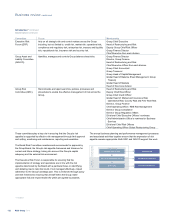 124
124 -
 125
125 -
 126
126 -
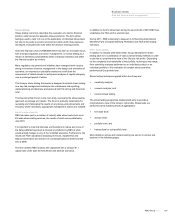 127
127 -
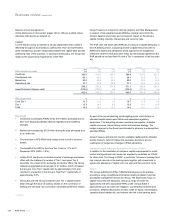 128
128 -
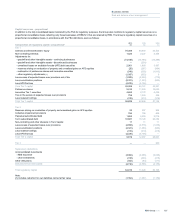 129
129 -
 130
130 -
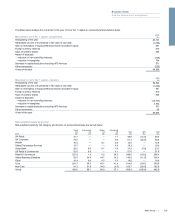 131
131 -
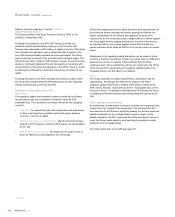 132
132 -
 133
133 -
 134
134 -
 135
135 -
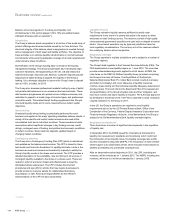 136
136 -
 137
137 -
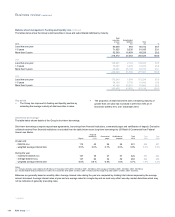 138
138 -
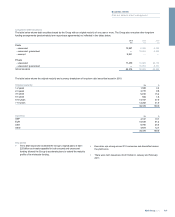 139
139 -
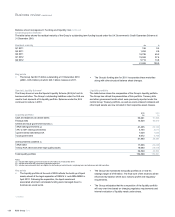 140
140 -
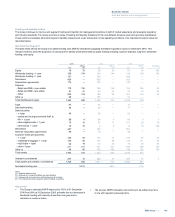 141
141 -
 142
142 -
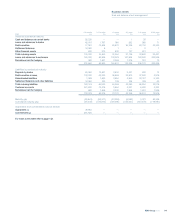 143
143 -
 144
144 -
 145
145 -
 146
146 -
 147
147 -
 148
148 -
 149
149 -
 150
150 -
 151
151 -
 152
152 -
 153
153 -
 154
154 -
 155
155 -
 156
156 -
 157
157 -
 158
158 -
 159
159 -
 160
160 -
 161
161 -
 162
162 -
 163
163 -
 164
164 -
 165
165 -
 166
166 -
 167
167 -
 168
168 -
 169
169 -
 170
170 -
 171
171 -
 172
172 -
 173
173 -
 174
174 -
 175
175 -
 176
176 -
 177
177 -
 178
178 -
 179
179 -
 180
180 -
 181
181 -
 182
182 -
 183
183 -
 184
184 -
 185
185 -
 186
186 -
 187
187 -
 188
188 -
 189
189 -
 190
190 -
 191
191 -
 192
192 -
 193
193 -
 194
194 -
 195
195 -
 196
196 -
 197
197 -
 198
198 -
 199
199 -
 200
200 -
 201
201 -
 202
202 -
 203
203 -
 204
204 -
 205
205 -
 206
206 -
 207
207 -
 208
208 -
 209
209 -
 210
210 -
 211
211 -
 212
212 -
 213
213 -
 214
214 -
 215
215 -
 216
216 -
 217
217 -
 218
218 -
 219
219 -
 220
220 -
 221
221 -
 222
222 -
 223
223 -
 224
224 -
 225
225 -
 226
226 -
 227
227 -
 228
228 -
 229
229 -
 230
230 -
 231
231 -
 232
232 -
 233
233 -
 234
234 -
 235
235 -
 236
236 -
 237
237 -
 238
238 -
 239
239 -
 240
240 -
 241
241 -
 242
242 -
 243
243 -
 244
244 -
 245
245 -
 246
246 -
 247
247 -
 248
248 -
 249
249 -
 250
250 -
 251
251 -
 252
252 -
 253
253 -
 254
254 -
 255
255 -
 256
256 -
 257
257 -
 258
258 -
 259
259 -
 260
260 -
 261
261 -
 262
262 -
 263
263 -
 264
264 -
 265
265 -
 266
266 -
 267
267 -
 268
268 -
 269
269 -
 270
270 -
 271
271 -
 272
272 -
 273
273 -
 274
274 -
 275
275 -
 276
276 -
 277
277 -
 278
278 -
 279
279 -
 280
280 -
 281
281 -
 282
282 -
 283
283 -
 284
284 -
 285
285 -
 286
286 -
 287
287 -
 288
288 -
 289
289 -
 290
290 -
 291
291 -
 292
292 -
 293
293 -
 294
294 -
 295
295 -
 296
296 -
 297
297 -
 298
298 -
 299
299 -
 300
300 -
 301
301 -
 302
302 -
 303
303 -
 304
304 -
 305
305 -
 306
306 -
 307
307 -
 308
308 -
 309
309 -
 310
310 -
 311
311 -
 312
312 -
 313
313 -
 314
314 -
 315
315 -
 316
316 -
 317
317 -
 318
318 -
 319
319 -
 320
320 -
 321
321 -
 322
322 -
 323
323 -
 324
324 -
 325
325 -
 326
326 -
 327
327 -
 328
328 -
 329
329 -
 330
330 -
 331
331 -
 332
332 -
 333
333 -
 334
334 -
 335
335 -
 336
336 -
 337
337 -
 338
338 -
 339
339 -
 340
340 -
 341
341 -
 342
342 -
 343
343 -
 344
344 -
 345
345 -
 346
346 -
 347
347 -
 348
348 -
 349
349 -
 350
350 -
 351
351 -
 352
352 -
 353
353 -
 354
354 -
 355
355 -
 356
356 -
 357
357 -
 358
358 -
 359
359 -
 360
360 -
 361
361 -
 362
362 -
 363
363 -
 364
364 -
 365
365 -
 366
366 -
 367
367 -
 368
368 -
 369
369 -
 370
370 -
 371
371 -
 372
372 -
 373
373 -
 374
374 -
 375
375 -
 376
376 -
 377
377 -
 378
378 -
 379
379 -
 380
380 -
 381
381 -
 382
382 -
 383
383 -
 384
384 -
 385
385 -
 386
386 -
 387
387 -
 388
388 -
 389
389 -
 390
390 -
 391
391 -
 392
392 -
 393
393 -
 394
394 -
 395
395 -
 396
396 -
 397
397 -
 398
398 -
 399
399 -
 400
400 -
 401
401 -
 402
402 -
 403
403 -
 404
404 -
 405
405 -
 406
406 -
 407
407 -
 408
408 -
 409
409 -
 410
410 -
 411
411 -
 412
412 -
 413
413 -
 414
414 -
 415
415 -
 416
416 -
 417
417 -
 418
418 -
 419
419 -
 420
420 -
 421
421 -
 422
422 -
 423
423 -
 424
424 -
 425
425 -
 426
426 -
 427
427 -
 428
428 -
 429
429 -
 430
430 -
 431
431 -
 432
432 -
 433
433 -
 434
434 -
 435
435 -
 436
436 -
 437
437 -
 438
438 -
 439
439 -
 440
440 -
 441
441 -
 442
442 -
 443
443 -
 444
444 -
 445
445
 |
 |

Regulatory developments
Basel III and CRD IV
The Basel Committee released the final text on the new Basel III Capital
and Liquidity Frameworks in December 2010, the contents of which were
broadly as expected. Whilst most of the new rules are ‘final’ there are
lengthy observation periods for the more novel elements (the liquidity
coverage ratio, the net stable funding ratio and the leverage ratio)
designed to identify any unintended consequences prior to full
implementation and it is possible that some of the detail may be amended.
The capital requirements for credit valuation adjustments (CVAs) with
respect to counterparty risk are subject to a final impact assessment
which is being carried out in the first quarter of 2011. The Committee’s
guidance on the countercyclical capital buffers allows for significant
judgement which will need to be clarified by national regulators. The
potential impacts for RBSG are set out below.
xnational implementation of increased capital requirements will begin
on 1 January 2013;
xthere will be a phased five year implementation of new deductions
and regulatory adjustments to Core Tier 1 capital commencing 1
January 2014;
xthe de-recognition of non-qualifying non common Tier 1 and Tier 2
capital instruments will be phased in over 10 years from 1 January
2013; and
xrequirements for changes to minimum capital ratios, including
conservation and countercyclical buffers, as well as additional
requirements for Systemically Important Financial Institutions, will be
phased in from 2013 to 2019.
The focus will now be on the EU’s implementation of the Basel framework.
The Commission’s legislative proposal - the Capital Requirements
Directive (CRD) IV - is expected to appear in summer 2011.
Contingent capital and loss absorbency
The Basel Committee issued its final rules on the requirements to ensure
all classes of capital instruments fully absorb losses at the point of non-
viability, before tax payers are exposed to loss. These are designed to
combat the experience during the crisis where holders of Tier 2 capital
instruments did not suffer any losses when banks were bailed out by the
public sector. Debate continues, meanwhile, over possible requirements
for bailing-in senior debt holders, as a further means of protecting the
taxpayer.
Implementation by the Group
RBS is advanced in its planning to implement these newmeasures and is
appropriately well-capitalised with tangible equity of £56 billion, Core Tier
1capital of £49 billion and a Core Tier 1 ratio of 10.7% at 31 December
2010.
Set out below are indicative impacts and timings of the major Basel 2.5
and Basel III proposals on the Group’s Core Tier 1 ratio. The estimates
are still subject to change; a high degree of uncertainty still remains
around implementation details as the guidelines are not fully finalised and
must still be converted into rules by the FSA.
Asubstantial part of the mitigating impacts mentioned in the following
paragraphs relate to run-off in the normal course of business and de-
leveraging of legacy positions and securitisations, including Non-Core.
The Group is also devoting considerable resource to enhancing its
models to improve management of market and counterparty exposures.
Akey mitigating action related to counterparty risk involves enhancement
to internal models, which is a significant undertaking. There could be
various hedging strategies and business decisions taken as part of
mitigation which may have an adverse, but manageable, impact on
revenues.
CRD3 (Basel 2.5): Published rules for market risk and re-securitisations.
Proposed implementation date 31 December 2011
The estimated impact on pro-forma at the end of 2011 on RWAs post
mitigation is an increase of £25 billion to £30 billion, split equally between
GBM and Non-Core.
Basel III Counterparty risk: Proposed implementation date 1 January
2013
The impact on RWAs on implementation in 2013 is currently estimated at
£45 to £50 billion post mitigation and deleveraging, although there may
still be movement in the final framework around this risk.
Basel III Securitisations: Proposed implementation date 1 January 2013
Under the proposals, current deductions under Basel II (50% Core Tier 1,
50% Tier 2) for securitisation positions are switched to RWAs weighted at
1,250%. Post the run-off of securitisation positions and mitigating actions,
the impact on implementation in 2013, on RWAs is estimated to be an
increase of £30 billion to £35 billion with a corresponding reduction in
deductions from Core Tier 1 and Tier 2 capital of £1.2 billion to £1.5
billion each. The impact net RWA equivalent of this change assuming a
10% Core Tier 1 ratio would be an increase in net RWA equivalents of
£18 billion to £20 billion.
Summary impacts
The extent of the individual areas of impact, as set out above, may
continue to change over time. As previously indicated, however, the
overall impact on RWAs of CRD III and CRD IV after mitigation and
deleveraging is estimated to be £100 billion to £115 billion, before
allowing for the offsetting reduction in deductions.
The impact referenced above would lower the Core Tier 1 ratio by
approximately 1.3%, assuming RWAs of £600 billion and a Core Tier 1
ratio of 10%.
131RBS Group 2010
Business review
Risk and balance sheet management
